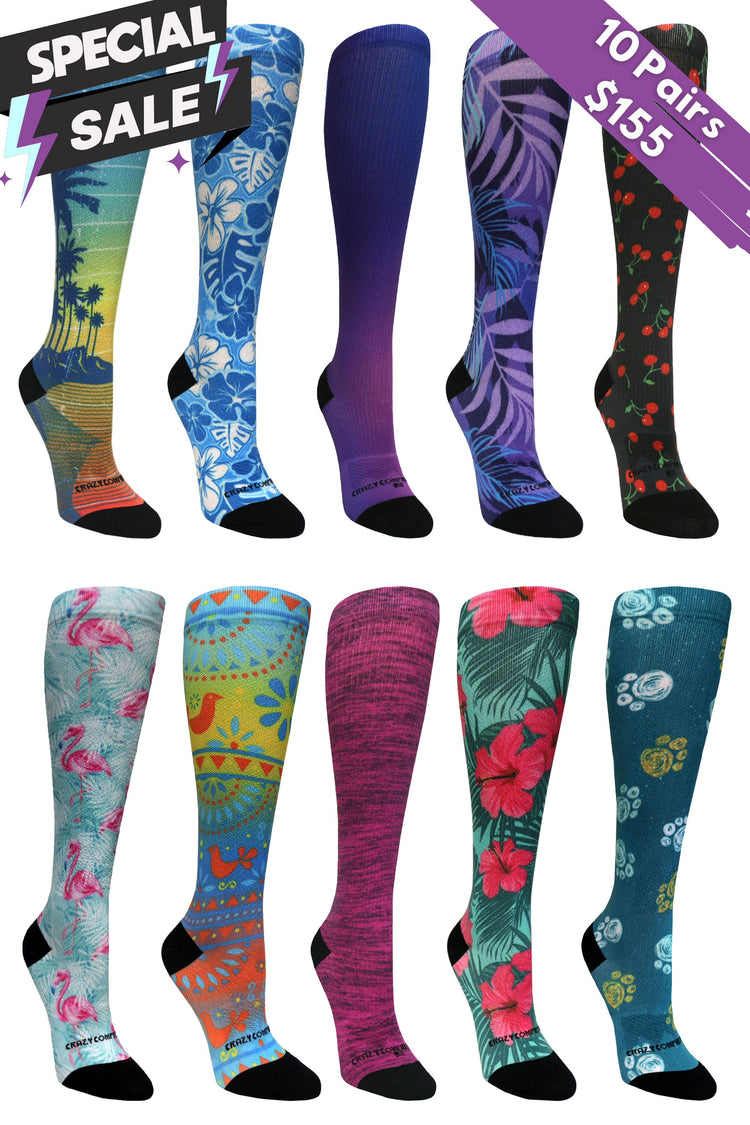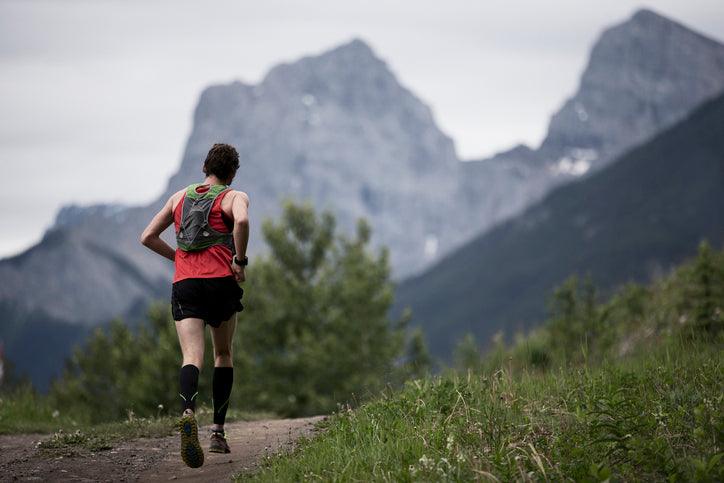The type of socks and shoes you wear as a runner matter, regardless if this is your first jog or you're a seasoned marathoner going for your next 5k—it's crucial to find the ideal shoe and compression sock pairing. And while its valid, specific brand names have a well-known reputation in the world of sports and athletics shoes, it's essential to look beyond the brand and identify the specifics you need first before investing in a new pair of shoes and compression socks. Why? Because the type of compression socks you pair with your shoes can make all the difference between a good run and a terrible one. So what qualities should you look for in athletic shoes and compression socks?
Here are just some of the qualities to create an optimal running experience for runners of all levels.
Finding The Shoe That Fits
Let us be open in saying that one of the best ways to find the right athletic shoe for you is, unfortunately, probably not going to happen through an online search. To find the ideal running or sports shoe for you, your best bet will be to go in person to a sports footwear specialty store and be fitted by a professional. Like our fingerprints, every one of us has a unique shape to our feet.
Every athletic shoe will be contoured differently and feel differently on our feet. By going to a professional who sees thousands of different feet of all sizes and shapes, they undoubtedly can speak frankly and give you an expert opinion on what sort of athletic shoes to begin trying on. They will also allow you to try many different options for the ideal fit.
Even if you are hoping to buy online, going to a professional and trying on many different shoes will ensure that what you buy online is suitable for your feet and fit.
The Fit
While the experts all agree that it is vital to evaluate a pair of shoes by first putting them on and standing in them with the compression socks you'd normally wear, you also need to perform the specific activity you are buying them for. Sometimes a pair of athletic shoes will feel perfect when standing or even walking. Yet, when you perhaps become over-eager, purchase those shoes and go for a run in them, you quickly realize there are several comfort and fit issues.
What does a well-fitting shoe feel like?
- A well-fit shoe should feel secure around your heel without slippage standing, walking, or running.
- A running or walking shoe will have plenty of space for your toes to wiggle and spread out. It is generally advised to go a size up from the average shoe size you are used to wearing for running shoes since your feet will be much more dynamic in movement during a run than a walk.
- Any sports shoe should leave about half an inch of room from your big toe to the tip of the shoe. You should never feel any pressure points while performing your activity with a shoe.
Shoe Shape and Feel
When you pick a shoe, it should mimic the same shape as your foot. A great pair of sneakers don't feel like a hindrance but an extension of your foot.
How does the shoe feel? Is it cushioned or firm? Does the shoe's arch feel correct and supportive, or does it bother your foot and how you walk? When you walk and run with the shoe, does it feel like your natural gait, or does it feel like you are fighting to find your normal rhythm? These aspects are critical to consider when you try on a shoe both for comfort and to prevent injuries to your feet.
Once you've evaluated how the shoe feels standing, walking, and running, how it fits the toes, and how it feels—there's one last essential aspect to take note of before deciding if they are suitable for you. How does your body feel after you've walked or run with the shoes? Did you develop the beginnings of a blister or have any hot spots where the shoe rubbed you? How do your toes feel during and after running? Did you experience any knee, shin, ankle, or foot pain?
Take note of how the shoes feel after your chosen activity.
Adding Compression Socks
Once you've found the athletic shoe that is the ideal fit and comfort level for you and your run, it's time to think about your compression socks. Many runners of all levels and types use compression socks for their feet, health, and well-being.
For long-distance runners, you'll want a medium compression such as 15 – 20 mmHg as this level of compression can provide adequate pressure for improved circulation and help stave off tired, overworked legs and feet. Depending on how your legs and feet feel after a run, you may also want to consider having a pair that is slightly higher in compression as well for the days you push yourself. Long compression socks or crew-length compression socks work well here.
Lower compression will work just as well for a more leisurely pace or run, but you might find an ankle-length compression sock, a better comfort, and fit for a slower pace.
Elevate Your Running Experience With the Right Shoes and Compression Socks
At Crazy Compression, we deeply care about each customer's experiences and the quality of our compression socks. We're dedicated to ensuring your running, walking, working, or home experience with our compression socks will fit your needs while being a life-long comfortable tool to promote healthier feet and better circulation.
Do you want to know more about how our compression socks make a difference or have questions for us? Don't hesitate to contact us with any comments or questions you have. It would be our pleasure to assist you.

































Leave a comment
This site is protected by hCaptcha and the hCaptcha Privacy Policy and Terms of Service apply.